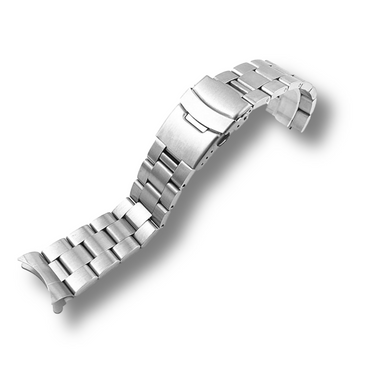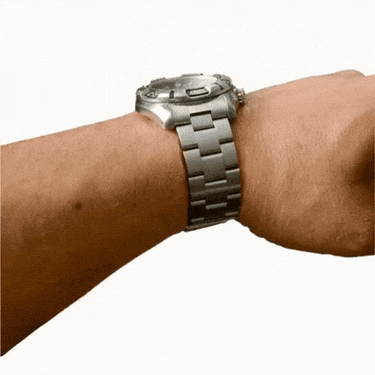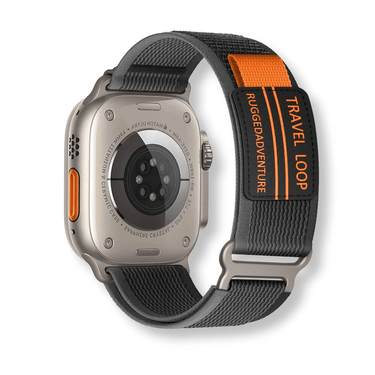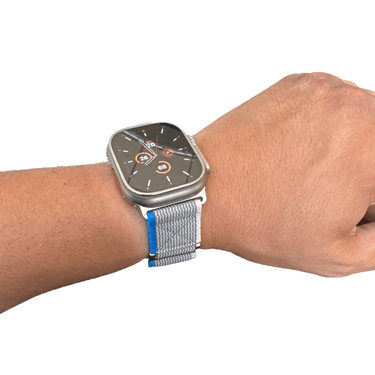When it comes to watchbands, Nato and Zulu are two of the most popular types. However, many people may not know the difference between the two. In this article, we'll compare Nato vs Zulu watchbands and explain their features, materials, and how they differ from one another.
What are Nato Watchbands?
Nato watchbands are a type of one-piece strap that was originally developed by the British Ministry of Defence. They were designed to be worn by soldiers, and they are made of nylon, which makes them tough, durable, and long-lasting.
Nato watchbands consist of a single piece of material that threads through the watch's lugs and around the wrist. They are secured in place by a buckle or a loop, and they are available in a wide range of colors and patterns.
Nato watchbands are popular due to their simplicity and durability. They are also lightweight, making them comfortable to wear for extended periods. Additionally, they are easy to install, remove and can be washed easily.
Materials used in Nato Watchbands
The most commonly used material for Nato watchbands is nylon. This material is ideal for watchbands because it is strong, durable, and lightweight. It is also resistant to water and sweat, which makes it perfect for outdoor activities.
Nylon Nato watchbands are available in different textures and thicknesses. The weave of the fabric can vary from open to tight, giving a different look and feel to the watchband. Some Nato watchbands also incorporate a layer of leather on the underside for added comfort.
Nato watchbands are also available in other materials such as leather, canvas, and rubber. However, these materials are not as popular as nylon due to their lack of durability, and they are more expensive than their nylon counterparts.
What are Zulu Watchbands?
Zulu watchbands are similar to Nato watchbands in that they are also one-piece straps. They were originally developed for military use, specifically for the South African military. Zulu watchbands are also made of nylon, but they are thicker and stronger than Nato watchbands.
Zulu watchbands consist of a single piece of material that threads through the watch's lugs and around the wrist. They are secured in place by a buckle or a loop, and they are available in a limited range of colors and patterns.
Zulu watchbands are popular due to their durability and strength. They are also suitable for heavy-duty activities such as hiking, camping, or military training. Additionally, they are resistant to water, sweat, and UV rays.
Materials used in Zulu Watchbands
The material used in Zulu watchbands is also nylon, but it is thicker and heavier than that used in Nato watchbands. This thickness makes Zulu watchbands stronger and more durable, but it also makes them less breathable.
Zulu watchbands do not usually incorporate a layer of leather, as they are designed for heavy-duty use. The texture of the fabric is usually a tight weave, which gives a rugged look and feel to the watchband.
Zulu watchbands are also available in other materials such as canvas and leather. However, these materials are not as popular as nylon due to their lack of durability.
Nato vs Zulu Watchbands - What's the difference?
While Nato and Zulu watchbands are similar, there are a few key differences between the two.
Thickness: Zulu watchbands are thicker and heavier than Nato watchbands, making them more suitable for heavy-duty use.
Breathability: Nato watchbands are more breathable than Zulu watchbands, as they are made of a thinner and lighter nylon.
Availability: Nato watchbands are available in a wider range of colors and patterns than Zulu watchbands.
Comfort: Some Nato watchbands have a layer of leather on the underside, which makes them more comfortable to wear than Zulu watchbands.
When choosing between Nato and Zulu watchbands, it's important to consider your needs and personal preferences. Nato watchbands are lightweight and comfortable, making them suitable for everyday wear. On the other hand, Zulu watchbands are thicker and stronger, making them ideal for heavy-duty activities.
Which Watchband is Right for You?
The type of watchband you choose depends on your personal preferences and the activities you'll be doing while wearing it.
If you're looking for a watchband that's suitable for everyday use, a Nato watchband is an excellent choice. They are lightweight, comfortable, and available in a wide range of colors and patterns to suit your style.
On the other hand, if you need a watchband that can handle heavy-duty activities, a Zulu watchband may be more suitable. They are thicker and stronger than Nato watchbands and are ideal for activities like hiking, camping, or military training.
Ultimately, the choice between Nato and Zulu watchbands comes down to personal preference and the intended use. If you're unsure which one to choose, you can try both and see which one feels more comfortable and suits your style.
How to Choose the Right Watchband?
When choosing a watchband, there are a few things to keep in mind:
Material: Consider the type of material used in the watchband. Nylon is a popular choice due to its durability and water resistance.
Comfort: Look for a watchband that's comfortable to wear, especially if you'll be wearing it for extended periods.
Fit: Ensure that the watchband fits properly and doesn't move around on your wrist.
Style: Choose a watchband that matches your personal style and complements the design of your watch.
FAQs
Are Nato and Zulu watchbands interchangeable?
No, Nato and Zulu watchbands are not interchangeable as they have different widths and thicknesses.
Can Nato and Zulu watchbands be worn in water?
Yes, both Nato and Zulu watchbands are water-resistant and can be worn in water.
Can I wear a Nato or Zulu watchband with a dress watch?
While Nato and Zulu watchbands are casual, they can be worn with dress watches if chosen carefully to match the formality of the event.
Can I adjust the length of a Nato or Zulu watchband?
Yes, both Nato and Zulu watchbands can be adjusted to fit your wrist size.
What is the price range of Nato and Zulu watchbands?
Nato and Zulu watchbands are available in a wide range of prices, starting from around $10 and going up to $50 or more for premium versions.
Conclusion
Nato and Zulu watchbands are two popular types of one-piece watch straps. While they share many similarities, they differ in thickness, breathability, and availability of colors and patterns. When choosing a watchband, it's important to consider your needs and personal style to determine which type of watchband is right for you. Nato watchbands are ideal for everyday wear, while Zulu watchbands are better suited for heavy-duty activities. Keep in mind the material used, comfort, fit, and style when choosing a watchband.
To ensure that your watchband lasts as long as possible, it's important to take care of it. Follow the manufacturer's instructions on cleaning and maintenance to keep your watchband in good condition.
In conclusion, both Nato and Zulu watchbands are excellent choices for those looking for a durable and versatile watchband. While they differ in thickness, breathability, and availability of colors and patterns, both types of watchbands have their advantages and are suitable for different types of activities. With the information provided in this article, you should now be able to make an informed decision on which type of watchband is right for you.



























